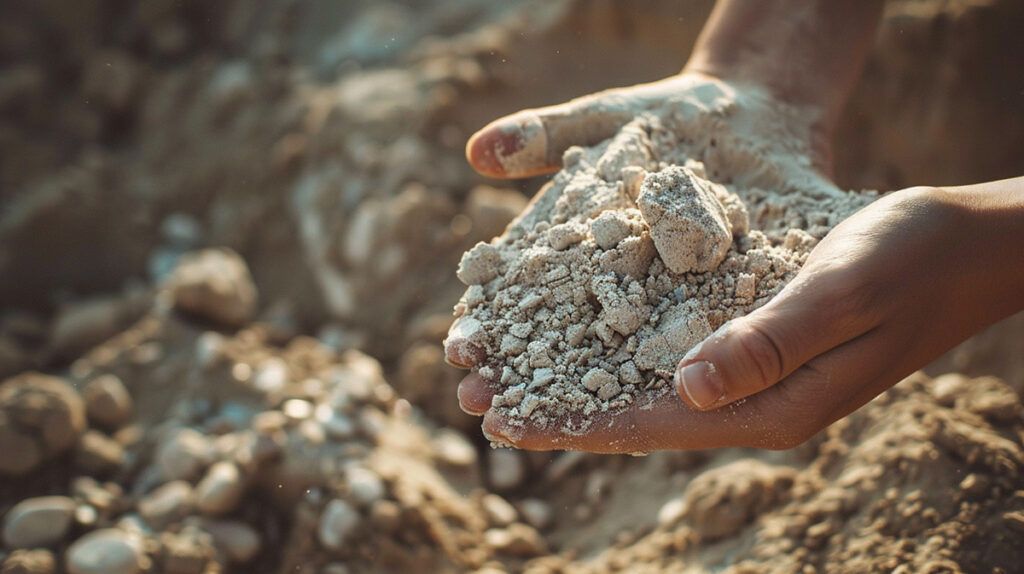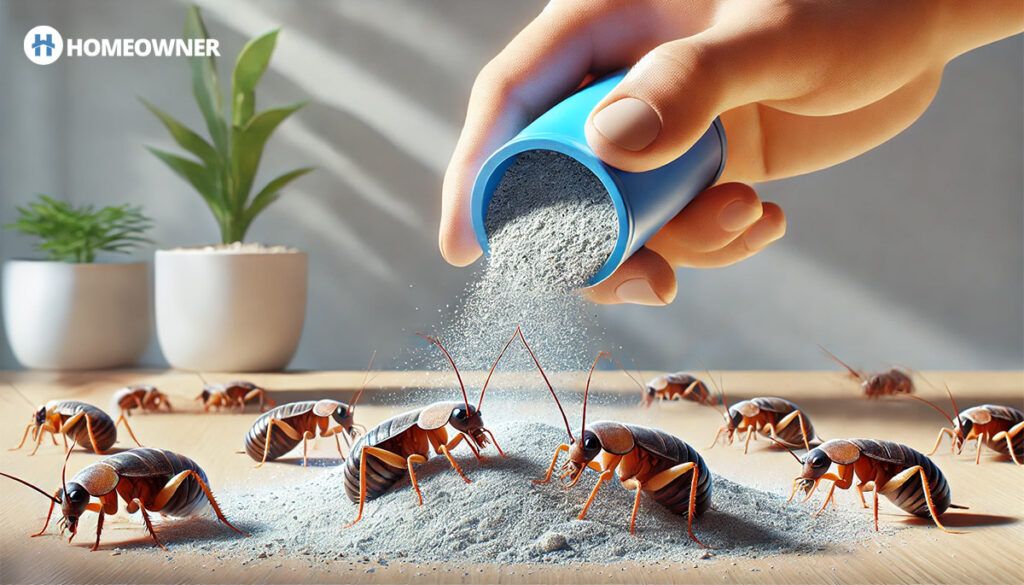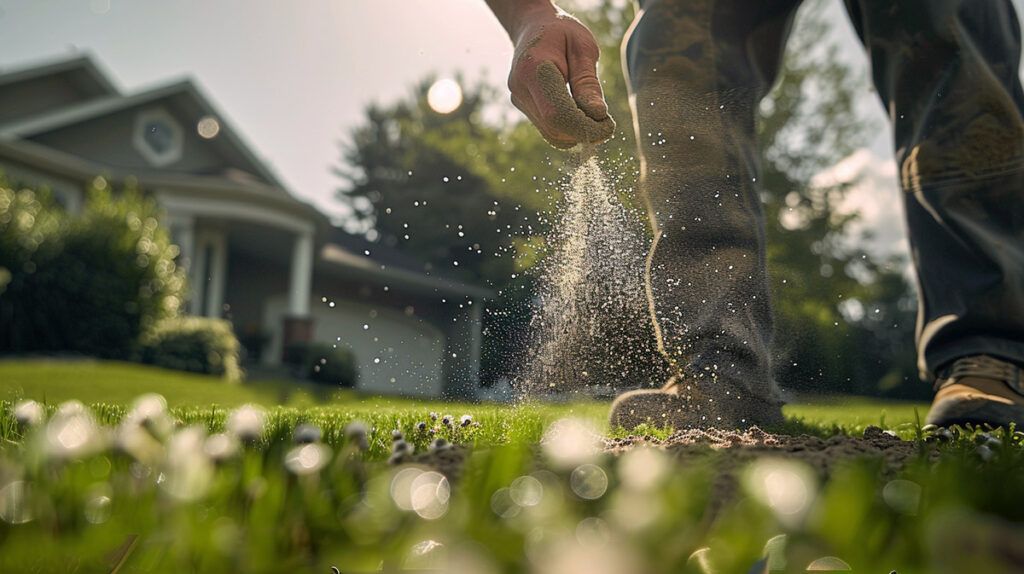Is Diatomaceous Earth Safe for Pets?

Many homeowners who are dealing with a pest infestation choose to use diatomaceous earth for treatment and prevention. This naturally occurring mineral has been proven effective at killing pests, but is it also safe for people and pets in the house?
Anytime you’re trying to eradicate pests from your home whether you’re using synthetic pesticides or natural remedies, you’ll want to ensure that they’re safe for everyone who lives there.
👉 Related: Best Ant Killer in 2025
As with all types of pest control remedies, there are certain precautions you’ll need to take when you use them and diatomaceous earth is no different. We’ll go over the basics about what diatomaceous earth is, how it works, whether it’s safe for pets, and end with some tips to ensure safe handling.
What Is Diatomaceous Earth?

Diatomaceous earth goes by many names: silicon dioxide, diatomaceous silica, infusorial earth, diatomite, or simply “DE.” Essentially, diatomaceous earth is a chalk-like sedimentary rock that’s found all over the world. The US is the biggest producer of diatomite and the states with the most reserves are California, Nevada, Oregon, and Washington with the largest deposits near Lompoc, California.
The root of the word, “diatom,” refers to a type of algae that’s a single-cell organism surrounded by a transparent, silica cell wall. These diatoms are found in oceans and waterways, and diatomaceous earth is made from their fossilized remains that have been breaking down over thousands of years.
What’s left is the silica that the diatom’s cell walls were made of which is then processed into a powder (though you can also get it in a concentrated liquid form) to create the diatomite. DE is then used in several applications like food production, food storage, polishing, swimming pool filters, water filtration, and as a nonpoisonous insecticide.
Is Diatomaceous Earth Safe for Pets?

The short answer is yes. Diatomaceous earth is safe to use around pets, and is commonly used to kill termites and be a pet-friendly ant killer. But like any new product you bring into your home or use on your property, you should make sure you’re taking all the necessary precautions.
👉 Recommended reading: What does permethrin kill?
Diatomite is not considered harmful or poisonous to humans or animals, but it can be an eye, lung, and skin irritant if you’ve had a lot of exposure to it. Because of this, it’s wise to make sure any pets are out of the house when you’re treating your home. If the product is used on your pet’s bedding, be sure to thoroughly remove it all before your pet lays on it again. If removing your pet temporarily isn’t an option, you may wish to quarantine pets to certain rooms while the diatomaceous earth is being used in other parts of your home.
Ideally, you will also want to remove all the diatomaceous earth from your home before your pet returns, and this is especially true for cats and dogs who may roll around on the treated area which can then get in their fur and skin, or they may groom themselves and accidentally ingest it.
Diatomaceous Earth vs Boric Acid
It should be noted that there are other pest control products that homeowners should be careful about when using around pets. For example, many people can confuse diatomaceous earth and boric acid since they are both readily available white powders that are used in pest control.
However, the two products are quite different. If you’re wondering, “Is boric acid safe for pets?” the answer is not as clear cut. Boric acid is a naturally occurring compound and small doses of it aren’t harmful to people or pets. And, though it’s only considered to be mildly toxic, pet owners should exercise caution whenever using it in their homes. Additionally, because you’ll need a significant amount of boric acid to treat pests, it can harm pets if it’s ingested in these larger quantities.
Types of Diatomaceous Earth

The diatomaceous earth that most consumers buy is considered to be “food grade,” and you can find it used in common household items like toothpaste, skin care products, as an anti-caking agent, and even in some beverages. Food grade DE is considered a “natural” grade product. It is produced at low temperatures and contains mostly amorphous silica.
There is also non-food grade diatomaceous earth (called filter grade) that is used primarily in water filtration systems and dynamite production. The non-food grade product is also called “calcined,” “flux-calcined,” or “pool” grade and is produced at much higher temperatures and consists of mostly crystalline silica.
This type of diatomite can be much more harmful to people and pets. Research has shown that inhaling crystalline silica can cause lung cancer, kidney diseases, chronic obstructive pulmonary disease (COPD), and lung disease (specifically silicosis, which is incurable).
Which Pests Does Diatomaceous Earth Kill?
Diatomaceous earth works best and fastest on smaller insects because it breaks down the bug’s exoskeleton and this will take longer with larger insects. That said, given enough time to work, this product has been proven effective at killing the following insects:
- Fleas
- Ants
- Mites
- Cockroaches
- Bed bugs
- Aphids
- Silverfish
- Ticks
- Carpet beetles
- Termites
- Spiders
👉 Related: Baby Bed Bugs: What Do They Look Like?
How Does Diatomaceous Earth Work?

Diatomaceous earth is not a true pesticide as most people understand it. Unlike a more common pest control product like pyrethrins which work by attacking the insect’s nervous system and causing paralysis, DE works in a much different way. When diatomaceous earth comes into contact with the insect, it absorbs all of its moisture and oils. Eventually, the bug dries out and dies.
As the bugs pass through the powdered diatomite, the sharp edges of the mineral scratch and tear at the sides of the bugs, gradually wearing it down and it is then able to absorb the bug’s oils. This is mostly done through physical contact with the product and the insects don’t actually have to consume the diatomite for it to be effective, but some larger bugs may eat it.
Keep in mind that DE will only kill adult insects and is not effective on eggs. This is why it’s so important to treat any pest infestation immediately before the bugs have time to reproduce. That said, even if there are eggs present, just be aware that you may need to apply the DE multiple times to account for newly hatched insects.
How To Use Diatomaceous Earth

Diatomaceous earth is safe to use both inside and outside of the home, but any application should be done following the directions on the product label. For indoor applications, you typically want to use the diatomite in a powder form. Lightly dust the areas where you’ve seen insect activity (some people like to use a flour sifter to get a more even coat), as well as any entry points like window sills or cracks along floorboards.
You may also wish to apply it under refrigerators or the stove, in garbage cans, in the garage, or inside cabinets. The longer the powder can sit, the more effective it will be which can be as short as a few hours or as long as a few days. You can then sweep or vacuum up the remaining powder along with the dead insects. You can also use the diatomaceous earth to form a barrier around areas of your home that are especially attractive to pests like food sources or a pet’s food bowl.
When using this product outside, you can dust the perimeter of your foundation and along entryways like doors and windows. If you’d like to use it on an area that the loose powder won’t stick to (for instance to the leaves of plants) you can mix it with water and spray it onto the surface you want to treat and it will soon dry leaving a fine dusting of the DE. To do this, you should mix four tablespoons of diatomaceous earth with one gallon of water.
Safety Tips for Handling Diatomaceous Earth
Although diatomaceous earth is very safe and largely harmless to people and other animals, you should still follow a few pest control tips. The most common side effect of using this product is if it comes into contact with your skin or eyes it could cause irritation and itching, and if the powder is inhaled it can irritate the lungs. To guard against this, you should wear safety goggles, gloves, and a face mask or face covering when you’re applying it. You may also want to remove any pets from the house during application and until it’s cleaned up because dogs and cats can experience similar reactions as humans.
All in all, diatomaceous earth is a good option for homeowners who are looking for a natural solution to their pest control needs and may be hesitant to use harsher pesticides. If you’re unsure about using this product, or if you’ve tried it and are still battling bugs, you should research the best pest control companies in your area and reach out to schedule an inspection and get a quote.
Where can I buy diatomaceous earth?
Diatomaceous earth is available at most home improvement stores like Home Depot, Lowes, and Ace Hardware, or at your local feed or garden store. You can also easily find this product online through retailers like Amazon. However, wherever you end up purchasing this, make sure that you’re only buying food-grade diatomaceous earth.
How long does diatomaceous earth take to kill bed bugs?
When you use DE to treat bed bugs, you shouldn’t expect an immediate result. In most cases, bed bugs will take two to four weeks to fully take care of an infestation, and this may require multiple applications and/or leaving the product in place which means no one will be able to use the areas of your home that are currently being treated.
Is diatomaceous earth safe for children?
Yes, this product is safe for both people and animals. However, it’s a good idea for children to be out of the house while the DE is being used because of exposure concerns to the skin, eyes, and lungs.
Does diatomaceous earth kill roaches?
While diatomaceous earth is most effective at killing small insects, it can be used against cockroaches but this will take longer and you may have to perform multiple applications. This is because a cockroach’s exoskeleton is much thicker than bugs like ants or fleas and it will take longer for the diatomite to break it down.
How long does it take for diatomaceous earth to work?
In some applications, diatomaceous earth can kill insects in a matter of hours, while in others it can take several days or even up to a few weeks to work. In general, the larger the infestation and the larger the bug, the longer it will take to work.